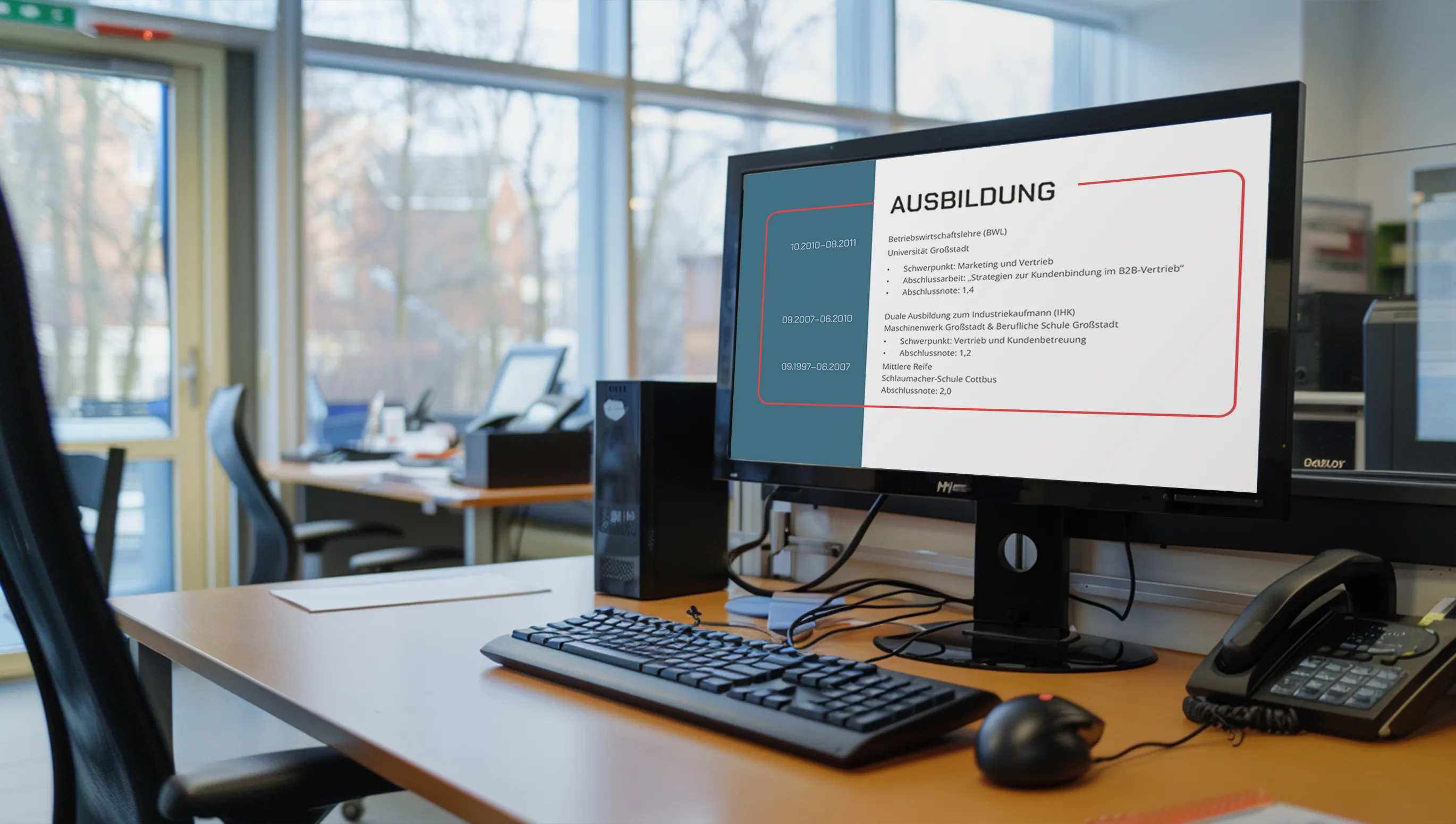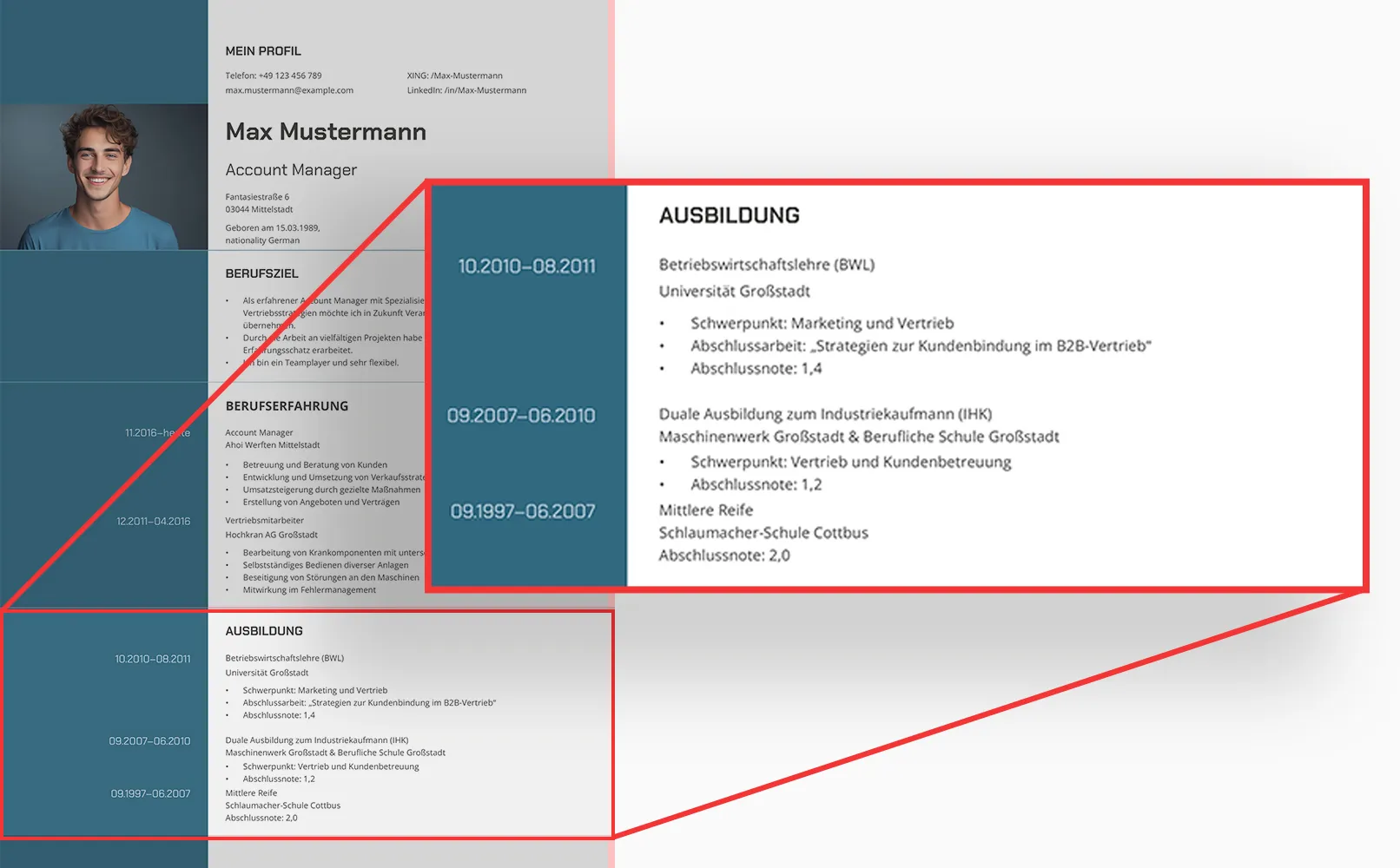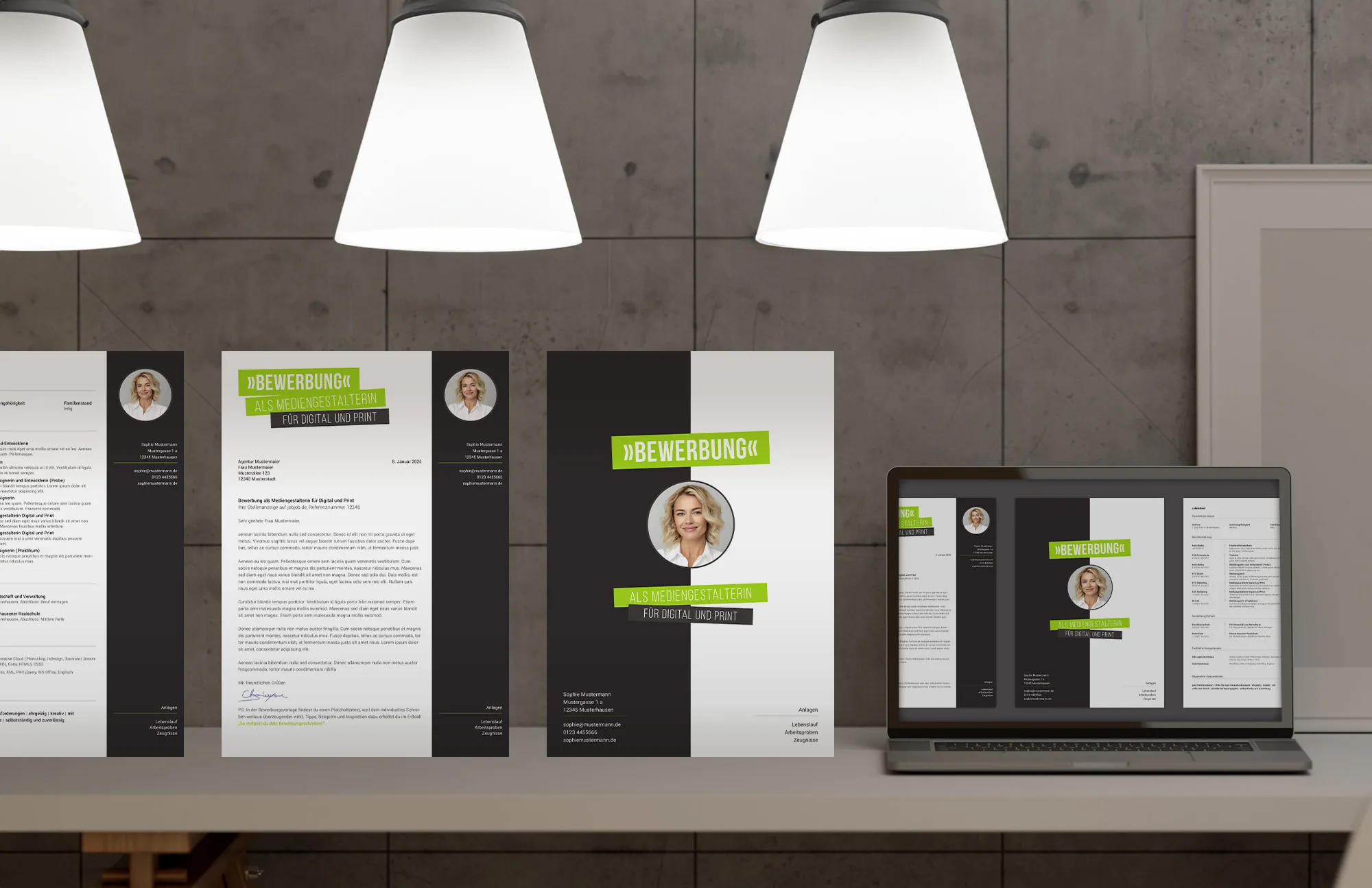Education and educational background in the resume: This is the correct way
Your educational background in your resume is more than just a list of schools and universities. It is the foundation on which your career is built. And if you think employers don't pay attention to the educational background section, you are wrong. In fact, the educational background shows how well-prepared you are for challenges in a new position. There is no place for general phrases and unclear details here. You must present clear, structured information that impresses the employer and highlights your qualifications.

An investment in knowledge pays the best interest
Benjamin Franklin
This article entitled "Educational Background in a Resume" is just one of several that describe the structure of a resume. Follow this link to better understand the structure of a resume. In this article, we will explore how to correctly fill out the "educational background" section in your resume, avoid common mistakes, and highlight exactly the educational aspects that make you the ideal candidate. So, forget the passive approach. Your task is to make this section speak loudly about your achievements and potential. Chronology, specificity, and relevance are the main aspects of this task. Each point should work for you by demonstrating your educational history and how it has prepared you for professional challenges.
The Importance of Educational Background in a Resume
Do you think education is unimportant? Probably not. Your educational background can be a significant additional argument in your favor. The educational background shows the employer how well-prepared you are for future challenges. Your diplomas, certificates, and courses serve as evidence of your perseverance, skills, and willingness to learn.
Education is not preparation for life; education is life itself.
John Dewey
It is a mistake to think that this section is just a formality. No, it is your chance to show that you have a solid knowledge base and are constantly evolving. To show that you are not standing still, but striving for more. Employers appreciate candidates who invest in their education and can demonstrate real achievements. Your education can be the deciding factor that sets you apart from other applicants. Remember, your well-crafted educational background in your resume is your competitive advantage. Make the most of it.
What Information Should Be Included in the Educational Background Section?
In the educational background section of your resume, your educational history should be presented clearly and structured to show an employer immediately your educational preparation. There is no room for general phrases and uncertainties. Each point should best reflect your qualifications and readiness. Let's consider what information should be included in this section to impress a German employer:

Educational institutions: Provide the exact names of the educational institutions, such as "Technical University of Munich" or "Gymnasium Berlin". This demonstrates your attention to detail and confirms the authenticity of your information. Each educational institution is an argument for your application.
Study periods: Be sure to provide the exact dates for the start and end of your education, e.g., "October 2015 – July 2019". This confirms your consistency and organizational skills. The employer wants to see how much time you have invested in your education.
Specializations and qualifications: Clearly state your specializations and the qualifications, degrees, and certificates obtained, such as "Bachelor of Science in Computer Science". This shows the specific knowledge you have acquired and why it is important for the desired position.
What to Watch For:
Pay attention to the relevance of the information. Mention those educational institutions, dates, specializations, and courses directly related to the position you are applying for. The employer wants to know how your education will help you fulfill the tasks of the specific position. Do not add unnecessary or irrelevant details that could distract from the main content. If a course or training does not contribute to strengthening your application, it is better to leave it out. Unless it was the main subjects of study.

How to Add Information Correctly and Structure It
The educational path must be structured in a way that the employer can immediately understand your educational background and qualifications. No confusion or uncertainties, everything must be clear, logical, and structured. Here's how to do it right.
- Start with the most recent education, the latest training should be at the top. This is the first thing the employer sees, and it should be the most current. Begin with the most recently completed educational institution and work your way backwards in reverse chronological order.
- Use specific names, as accuracy is your best friend. Provide the full names of the educational institutions. No abbreviations or general phrases. This gives your resume a professional look and shows your attention to detail.
- Provide exact dates, they must be precise. No "approximately" or "a few years ago." Concrete months and years are required. This shows that you take your education seriously and can clearly specify when you studied.
- Describe disciplines and qualifications. They are key to understanding what you can do. Do not limit yourself to general phrases like "Diploma" or "Degree". Be specific: "Bachelor of Science in Computer Science". Make it clear to the recruiter or employer that you have specific knowledge and skills that can be useful.
- Do not forget additional courses and training, if you have completed them. Emphasize your commitment to continuous development. Show that you are willing to learn and grow, which is a big plus for any candidate.
- Structure the information logically, present each educational institution and learning period as separate blocks of information. Use headings and subheadings to make the section look structured and easy to read. No chaos - just a clear, logical structure.
If you want this section to look professional and impressive, follow these rules and be prepared to showcase your educational path in the best light.
The great aim of education is not knowledge but action.
Herbert Spencer
The Most Common Errors and How to Avoid Them
At first glance, completing the educational path may seem like a simple task, but candidates often make critical mistakes here that can affect the overall impression of them. As I have written earlier - this section must be clear, logical, and professional to highlight your educational preparation. Let's look at the most common errors and how to avoid them to make your resume flawless.
- Missing chronological order: Disorganized information makes reading difficult. Start with the most recently attended educational institution and work your way backwards in reverse chronological order. This makes the resume logical and easy to understand.
- General phrases and lack of specificity: Using general phrases like "Received Diploma". Provide specific disciplines, degrees, and qualifications. For example: "Master of Business Administration, University of Hamburg".
- Ignoring additional educational programs: Overlooking important courses and certificates diminishes your advantages. Include all relevant additional courses and training that enhance your qualifications and make you a more competitive candidate.
- Inappropriate formatting: Different formatting styles, inappropriate alignment. Pay attention to maintaining a consistent formatting style. Use consistent fonts, sizes, and formats for all entries.
- Missing educational dates: Always check for missing exact start and end dates of education. Always provide precise educational dates. If you have taken academic breaks or interrupted your studies, explain these situations. If you were deregistered due to poor performance, it is better not to mention it.
Cultivation to the mind is as necessary as food to the body.
Marcus Tullius Cicero
By avoiding these mistakes, you make the educational path section clearer, more professional, and more convincing to the employer.

Educational Path in Resume: A Strategic Step to Success
Completing the educational path section in the resume is not just a formality, but a crucial step towards a successful career. By avoiding common mistakes and following clear guidelines, you can create an impressive and professional document that underscores your educational preparation and readiness for new challenges. Remember that every detail counts and well-structured information makes it easier for the employer to quickly assess your qualifications.
To simplify the creation of your ideal resume, use the pre-made templates from TutKit.com. These templates help you to quickly and professionally design your application, ensuring that it meets all the requirements and standards of the German job market. The advantages of these templates include:
- An intuitive structure that can easily be customized to your individual needs.
- 100% compatibility with Word, InDesign, or Affinity Publisher.
- Impressive designs from the renowned agency 4eck Media.
- A wide range of ready-made solutions for specific positions and industries.
On our portal, you will find valuable resources for the educational path in the resume and a variety of other interesting articles to help you create a compelling application and prepare optimally for your job interview. Some highlights include:
- Creating a job application photo - important tips: This article offers practical advice on how to create a professional job application photo that leaves a positive first impression. Learn about appropriate clothing, preferred backgrounds, and how to pose best for the photo.
- Cover letter - structure and tips: Here you will find a detailed guide on the structure of a cover letter, including useful tips on how to effectively communicate your qualifications and motivations. These guidelines help you structure your cover letter in a way that captures the attention of HR managers.
- Resume structure - guide, tips & templates: This article offers a comprehensive guide to structuring your resume. Additionally, you will have access to templates that you can use directly or customize to your individual needs.
- Questions in the job interview - Best preparation for an interview: Prepare for typical interview questions with this guide. Learn how to formulate your answers to present your skills and experiences optimally.
- Strengths and weaknesses in the job interview: This post helps you prepare for frequently asked questions about your personal strengths and weaknesses. Discover the best strategies to make your answers authentic and convincing.
With these resources, you are well equipped to sharpen your professional profile and successfully navigate through the application process. Use our expert tips and templates to present yourself in the best possible way and improve your career opportunities.
From Vitalii Shynakov
